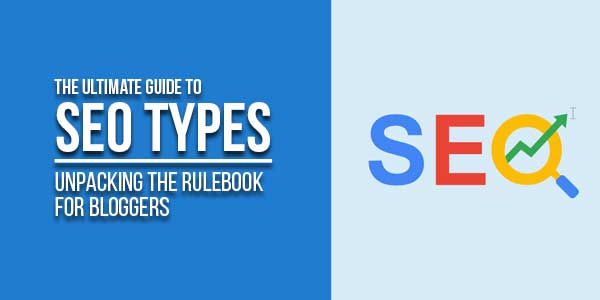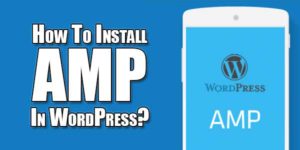
Alright, let’s have a real talk about SEO. You know, that thing everyone says you need to do for your blog, but nobody really breaks down in a way that doesn’t make you want to take a nap? Yeah, that.
I remember when I first started blogging. I’d hear terms like “on-page SEO,” “off-page SEO,” “technical SEO” thrown around, and my eyes would just glaze over. It felt like trying to learn a new language while riding a rollercoaster. Overwhelming, confusing, and honestly, a little nauseating.
But here’s the secret I learned through years of trial and error (and plenty of Google-induced panic attacks): SEO isn’t one big monster. It’s a bunch of smaller, manageable creatures. And once you learn how to feed each one, they all work together to make your blog thrive.
So, grab a coffee, get comfortable, and let’s break down exactly how many types of SEO there are and what the actual “rules” are. Think of this as a chat between friends—one who’s been in the trenches and is here to save you some time.
Table of Contents
What Is SEO, Really? (No, Really.)
Before we dive into the types, let’s get our heads straight on what we’re even talking about. SEO stands for Search Engine Optimization. In blogger terms?
It’s the art and science of making your blog so darn appealing and understandable to search engines like Google that they have no choice but to recommend you to people typing questions into that little search bar.
It’s not about tricking Google. Anybody who tells you that is selling you a time machine back to 2005. It’s about helping Google. You help Google understand your content, and Google helps you get it in front of the right people. It’s a partnership.
So, how many types of this “partnership” are there? Well, most pros break it down into three core categories, with a few bonus ones that have emerged over the years.
The Big Three: Core Types of SEO
Imagine SEO is a three-legged stool. If one leg is wobbly or missing, the whole thing falls over. Your goal is to make sure each leg is strong and sturdy.
1. On-Page SEO (The Stuff You Control On Your Blog)
This is the one most bloggers think of first. On-page SEO is all about optimizing the content and HTML source code of a page. This is your domain. You have 100% control over this, right now.
Think of it like this: You’re having a party (your blog post), and on-page SEO is everything you do to make sure your guests (readers and Googlebot) have a great time. You put out snacks (great content), put up clear signs (headings), and make sure the music isn’t too loud (page speed).
The “Rules” of On-Page SEO:
- Keyword Research & Intent: This is rule #1. It’s not just about shoving a keyword into your text 50 times. It’s about understanding what someone really wants when they type that word. Are they looking to buy? To learn? To find a location? Your content needs to match that intent. Use tools like Google’s own Keyword Planner or AnswerThePublic to get inside your reader’s head.
- Compelling Title Tag (Your Clickbait, But Honest): This is the blue, clickable link you see on the search results page. You have about 60 characters to convince someone to click on your result instead of the other nine. Make it count. Include your keyword, spark curiosity, or promise a solution.
- The Mighty Meta Description: That little snippet of text under the title tag. Google doesn’t use it for ranking, but it’s your ad copy. It’s your chance to tell searchers, “Hey, the answer you’re looking for is right here!” Write a compelling summary (around 155 characters) that includes your keyword.
- Headers That Actually Guide People (H1, H2, H3, etc.): Your H1 is your post title. Then, use H2s and H3s to break up your content. This isn’t just for SEO; it’s for human readers who are scanning. It creates a hierarchy that helps everyone understand your content. Your main keywords should be in your H1 and some H2s.
- Content That Answers the Question: This is the big one. Write comprehensive, awesome content that fully satisfies the user’s search intent. If someone searches for “how to make sourdough starter,” they want a detailed, step-by-step guide, not a three-paragraph overview. Go deep. Be the best result.
- Internal Linking: This is like building a web within your own blog. Link to your other relevant posts! It keeps people on your site longer, helps Google discover more of your pages, and shows how your content is connected. For example, if I mention the importance of checking your domain authority, I’ll link to my article on it.
- Image Optimization: Images slow down your site if they’re not optimized. Always, always compress your images. And always use descriptive file names (`chocolate-chip-cookies.jpg`) and alt text. Alt text helps screen readers and tells Google what the image is about—more SEO real estate!
2. Technical SEO (The Backstage Stuff)
If On-Page SEO is the party itself, Technical SEO is the electrical wiring, the plumbing, and the foundation of the house where the party is happening. Your guests might not see it, but if it’s faulty, the party’s over.
This is the part that often makes bloggers nervous because it feels… technical. But you don’t need to be a coder to understand the basics.
The “Rules” of Technical SEO:
- Site Speed is a Big Deal: How long are you willing to wait for a page to load? Me neither. Google knows this. A slow site creates a bad user experience and gets penalized. Use Google’s PageSpeed Insights to check your speed and get recommendations. A good hosting provider is your first step here.
- Mobile-Friendliness is Non-Negotiable: Google uses mobile-first indexing. That means it primarily looks at the mobile version of your site to rank it. If your site is a mess on a phone, you’re sunk. Your theme must be responsive (most modern ones are).
- Site Architecture & Crawlability: Can Googlebot easily find and navigate all your important pages? A clear, logical site structure (using a silo structure) helps with this. This is also where a good XML sitemap comes in—it’s a map of your site you submit to Google to say, “Here, this is everything I want you to see.”
- SSL Certificate (That Little Padlock): This means your site is served over HTTPS, making it secure. It’s a basic ranking signal and, more importantly, it tells users their connection is safe. If you don’t have that padlock in the address bar, get one from your host ASAP.
- Fix Broken Links: Nothing says “abandoned blog” like a 404 error page. Broken links create a terrible user experience. Use a tool like Screaming Frog or a simple plugin to regularly find and fix or redirect broken links on your site.
- Clean URL Structure: Your URLs should be readable and include your keyword. `yourblog.com/how-to-make-sourdough` is great. `yourblog.com/p=493?post_id=3048` is not.
3. Off-Page SEO (Your Reputation on the Web)
This is all about signals that happen outside of your website that indicate to Google how popular, authoritative, and trustworthy your site is. It’s your blog’s reputation.
The biggest component of off-page SEO is backlinks—other websites linking to your content.
The “Rules” of Off-Page SEO:
- Quality Backlinks Over Quantity: One link from a huge, trusted site like Forbes or a major player in your niche is worth more than 1,000 links from spammy comment sections or low-quality directories. It’s like getting a recommendation from a respected expert vs. a thousand recommendations from random people on the street.
- Earn Links, Don’t Just Build Them: The best way to get backlinks? Create truly exceptional, link-worthy content. This could be original research, an ultimate guide, a stunning infographic, or a unique tool. People naturally link to awesome stuff.
- Guest Posting (The Right Way): Writing high-quality articles for other blogs in your niche is a classic way to get a relevant backlink and expose yourself to a new audience. The key is to only guest post for reputable sites and to get a link that’s relevant and natural.
- Local SEO (If It Applies): If you have a local business or serve a local area, this is huge. This involves claiming your Google Business Profile, getting listed in local directories, and managing your name, address, and phone number (NAP) consistency across the web. For a deeper dive, understanding what is local SEO is crucial.
- Brand Mentions: Even if a site mentions your blog or brand name without a link, it’s still a positive signal. Google is getting better at understanding these “implied links” as a sign of reputation.

The New Kids on the Block: Other SEO Types
The world of SEO is always evolving. While the Big Three cover the essentials, a few other types have become incredibly important.
Local SEO
As mentioned above, if your blog or business has a physical location or serves specific geographic areas, Local SEO is your bible. It’s all about showing up in “near me” searches and local map packs.
Voice SEO
With the rise of Siri, Alexa, and Google Assistant, people are searching differently. Voice searches are longer, more conversational, and often phrased as questions. Optimizing for voice search means focusing on long-tail keywords and question-based phrases, and aiming for the coveted “position zero” (the featured snippet).
Video SEO
YouTube is the second largest search engine in the world. Optimizing your videos with keywords in titles, descriptions, and transcripts is a massive opportunity to reach a new audience. It’s a huge part of any modern digital marketing strategy.
E-A-T (Expertise, Authoritativeness, Trustworthiness)
This isn’t a separate type of SEO, but rather a overarching concept, especially for YMYL (Your Money Your Life) sites—sites that give advice on health, finances, etc. Google wants to rank content written by experts and trustworthy sources. Showcasing your credentials, citing sources, and having a clear “About Me” page are all part of this.
How It All Fits Together: A Real-Life Example
Let’s say I write a post: “The Ultimate Guide to Choosing the Best Laptop for Video Editing in 2024.”
- On-Page SEO: I research the keyword “best laptop for video editing.” I craft a killer title tag and meta description. I use H2 tags for sections like “Processor (CPU) Requirements,” “Graphics Card (GPU) Guide,” and “RAM Recommendations.” I compress all my images and add alt text. I link to my other post on video editing software for beginners.
- Technical SEO: My page loads in under two seconds. My site is mobile-friendly. The URL is `myblog.com/best-laptop-for-video-editing`. There are no broken links.
- Off-Page SEO: A few tech reviewers find my guide so comprehensive that they link to it from their own articles. I get a natural backlink from a reputable site.
- The Bonus Round: My content is so detailed and well-structured that Google features a part of it as a “featured snippet” (Voice SEO). I also create a YouTube video reviewing the laptops and embed it in the post (Video SEO).
See how it all works together? One type supports the other.
The Golden Rule of SEO: It’s About People
I’ll leave you with this, something it took me a long time to truly internalize:
“Don’t optimize for search engines. Optimize for the people who use search engines. Build a website for your users, and the SEO will follow.”
If you remember one thing from this entire guide, let it be that. Every single “rule” and “type” ultimately serves one purpose: creating a better, faster, more helpful experience for the human being on the other side of the screen.
Do that, and you’re already 90% of the way there.
Frequently Asked Questions (FAQs)
How long does it take for SEO to work on a new blog?
Patience is key! For a new blog, it typically takes 4 to 6 months to start seeing meaningful traction from SEO efforts. This is because Google needs time to discover, crawl, and index your pages and then trust your site enough to rank it. Consistency in publishing quality content and building backlinks will speed up the process.
What’s the best way to get my first backlink?
Start by creating a fantastic “skyscraper” piece of content—an ultimate guide, original research, or a unique tool. Then, use a technique called “broken link building.” Find relevant blogs in your niche, look for broken links on their site, suggest your superior content as a replacement. It’s providing value to them, making them more likely to link to you.
How many keywords should I put in one blog post?
Focus on one primary keyword per post. You can then naturally include 2-3 semantically related keywords (LSI keywords) or long-tail variations. The goal isn’t to stuff keywords but to cover a topic comprehensively. If you answer the reader’s question fully, you’ll naturally include related terms.
Is guest posting still a good way to build backlinks?
Absolutely, but quality is everything. Guest posting on reputable, relevant blogs in your niche is still a powerful strategy. The goal is to provide genuine value to the host’s audience and earn a contextual link back to your site within your author bio or the content itself. Avoid “content farms” that exist just for links.
How important are internal links for SEO?
Extremely important! Internal links help Google understand the structure and hierarchy of your site, spreading “link equity” (ranking power) throughout your pages. They also drastically improve user experience by keeping readers engaged and on your site longer, which reduces bounce rate. It’s one of the easiest and most effective SEO tactics.
Should I worry about Domain Authority (DA)?
Domain Authority is a metric created by Moz, not Google. It’s a useful comparative tool to gauge the potential strength of a site against competitors. However, don’t obsess over the number itself. Focus on the activities that *improve* DA, like earning quality backlinks and creating great content. The number will rise as a result of good habits.
Can I do SEO myself, or do I need to hire someone?
For most bloggers and small business owners, you can absolutely handle the fundamentals yourself. The core principles of on-page and basic technical SEO are learnable. You might consider hiring an expert if you have a large, complex e-commerce site, or if you’ve hit a plateau and need advanced strategy. But starting out, your focus should be on learning and doing.
What’s the biggest SEO mistake new bloggers make?
Two big ones: 1) Keyword stuffing—writing for robots instead of humans. 2) Ignoring technical SEO, especially site speed and mobile-friendliness. A beautiful post won’t rank if it loads slowly or looks terrible on a phone. The other common mistake is giving up too soon because they don’t see immediate results.
How often does Google update its algorithm?
Google makes thousands of changes to its algorithm every year. Most are tiny and go unnoticed. Several times a year, they roll out larger, “broad core updates” that can significantly impact search rankings. The best way to “survive” an update is to always follow the fundamental rule: create helpful, reliable, people-first content.
Are backlinks from social media good for SEO?
Links from social media platforms (Facebook, Twitter, etc.) are almost always “nofollow” links, meaning they don’t pass direct SEO “link juice.” However, they are incredibly valuable for generating traffic, exposure, and brand awareness. This can lead to others discovering your content and linking to it from their websites, which *does* help SEO. So, yes, they’re important indirectly!


















This is a fantastic, comprehensive guide to the different types of SEO—especially valuable for bloggers and digital professionals navigating today’s ever-evolving search landscape. Your breakdown of technical, on-page, off-page, and possibly even emerging areas like voice or video SEO (if included) offers both clarity and practicality.
I particularly appreciate how the guide likely balances theory with actionable strategies—something essential for anyone aiming to boost visibility and rankings in 2025’s competitive environment. The inclusion of practical rules for optimization, tailored to platforms like Blogspot or WordPress, enhances the guide’s real-world value.
I’m curious—do you also touch on AI-related SEO trends such as AI SEO, Answer Engine Optimization (AEO), or Generative Engine Optimization (GEO)? With search becoming increasingly AI-driven, addressing these would be a timely and powerful addition.
Thanks for putting together such an insightful and usable resource. I’m looking forward to your future posts—and applying these SEO strategies on my site!
Welcome here and thanks for reading our article and sharing your view. This will be very helpful to us to let us motivate to provide you with more awesome and valuable content from a different mind. Thanks again.
Great post! I’d love to see a follow-up covering newer trends like AI SEO or voice search optimization to complement these classic SEO types.
Welcome here and thanks for reading our article and sharing your view. This will be very helpful to us to let us motivate to provide you with more awesome and valuable content from a different mind. Thanks again.
This blog post is incredibly useful and instructive. I want to thank you for sharing this information
Welcome here and thanks for reading our article and sharing your view. This will be very helpful to us to let us motivate to provide you with more awesome and valuable content from a different mind. Thanks again.